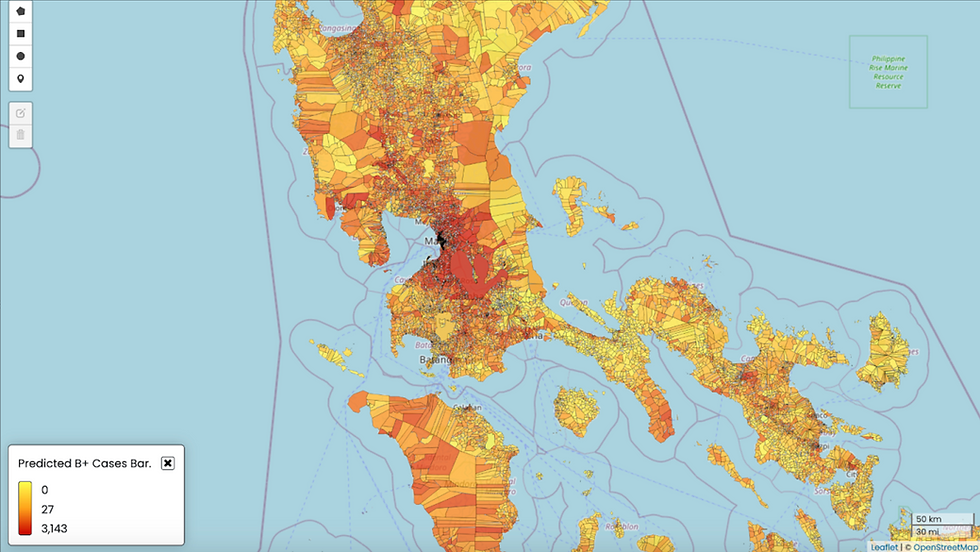Finding TB: An Innovative Grid-Based Approach to community level risk prediction in Pakistan
- Caroline Van Cauwelaert
- Nov 16, 2023
- 2 min read
Updated: May 22, 2024
Today at the Union World Conference on Lung Health in Paris, Dr. Sumbul Hashmi, EPCON’s Global Public Health Manager, presented a compelling poster detailing the organisation’s work in Pakistan.
Aligned with the conference theme of translating evidence into actionable practices, Dr. Hashmi's presentation highlighted the power of leveraging local data to predict risk of TB transmission at the community level. The poster not only shared valuable insights from firsthand project experiences but also illuminated the challenges faced along the way.

Moving beyond conventional clustering methods
Breaking away from traditional spatial clustering methods, EPCON leveraged Big Data and machine learning approaches to unearth areas with undiagnosed TB cases. Instead of relying solely on aggregated facility-level notifications, which might mask hotspots and local transmission sites, the poster detailed an alternative and innovative approach, comprising two crucial components:
Sourcing geo-located high-resolution open-source contextual variables, including population settlements, socio-demographic data and indicators of access to care.
Adopting a 2x2km grid level visualisation for predicting TB, such that the model is capable of finding the smallest hotspot even in remote regions.
The data was then processed through a Bayesian inference model to identify hotspots, yielding highly positive results. The output was available on visually intuitive maps that are currently used by the local teams for data-driven decision making. These maps showed areas, even remote ones, that harboured an elevated risk of TB transmission.
Not without challenges However, the project encountered challenges, as outlined in the poster, including:
Daily updating these models at such a high resolution required extended computer processing times.
Coordinating with health care systems for the model to incorporate both live ACF data and TB program notification data requires a strong commitment from all stakeholders. Despite these challenges, the project in Pakistan is one of our best showcases. Its ability to operate on real-time data facilitates a continuous feedback loop, empowering local teams to make informed decisions for efficient interventions.
In conclusion, the project demonstrated that looking beyond health facility-level notification data offers numerous advantages, particularly in enhancing the capacity of TB services in underserved and remote areas. We were delighted to share our experiences from this exciting project with delegates at this year’s Union World Conference.


